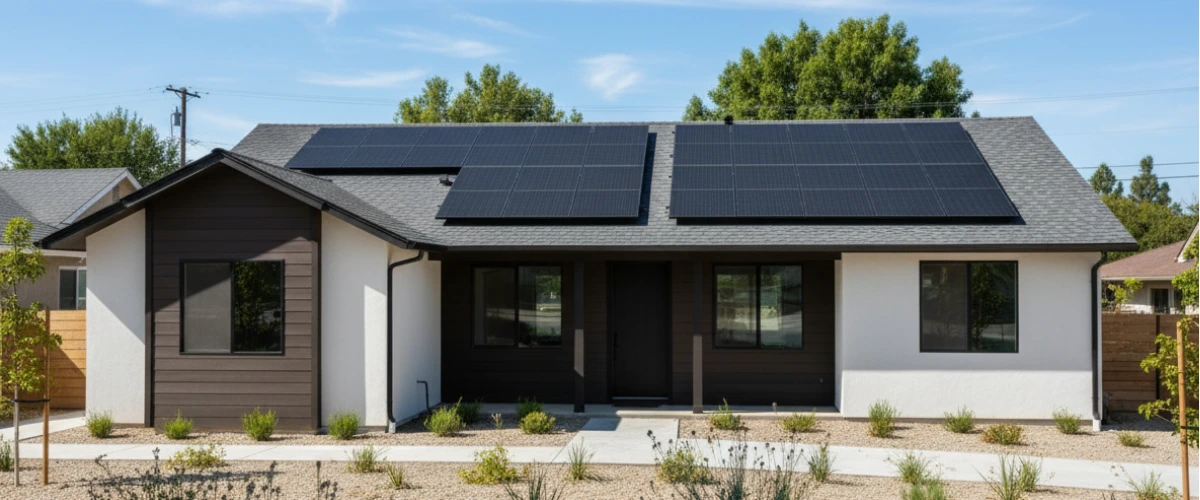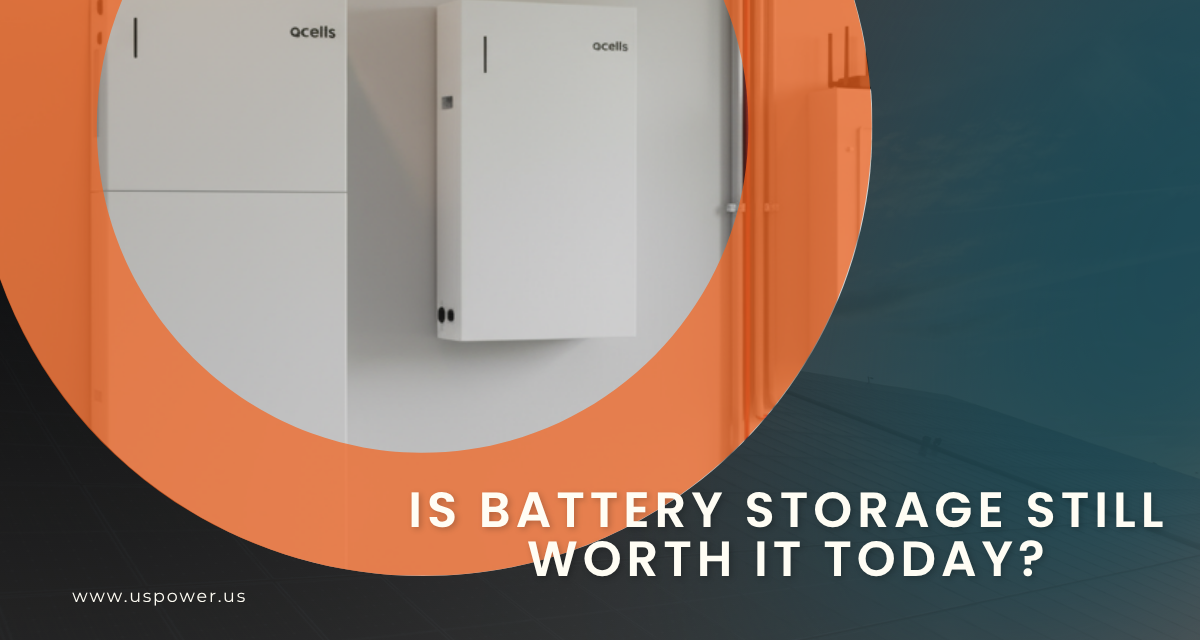High‑Pitch Appliance Noise? Your Solar Power Could Be the Cause

Solar and Roofing Advisor
Don’t let a 16 kHz whine ruin your solar experience. Get real solutions from EMI filters to QCells for a reliable system. Install batteries through US Power.

You invested in solar to save money, reduce your carbon footprint, and power your home with clean energy — but lately, something’s off. There’s a sharp, high-pitched whine in your house, especially during the day when your inverter is running. What’s worse, it’s not just coming from the inverter — it seems like your appliances are singing in that same uncomfortable frequency (around 16 kHz).
Not all installers take this seriously — but they should. That tone isn’t just annoying. It’s a sign that your system could be feeding electromagnetic interference (EMI) or harmonic distortion back into your home wiring. That not only disrupts audio comfort, but in worst-case scenarios may affect appliance performance or even damage sensitive electronics.
At US Power, we’ve helped homeowners tackle these kinds of problems — and we do it with clean, dependable systems using QCells panels and storage. Thanks to our factory-direct partnerships and deep expertise, we can deliver a more stable, interference-free solar system.
In this guide, you’ll learn:
- Why high-frequency noise shows up after a solar install
- What’s actually causing it (and why it’s leaking into your wiring)
- How professionals diagnose the issue
- Real fixes — from ferrite chokes to waveform cleaning
- When replacing parts (or the whole system) is your best bet — and why switching to a QCells-based system can resolve it permanently
1. What’s Causing That High-Pitch Whine? The Science Behind the Noise
To understand the whine, it helps to know how inverters work, and why some generate high-frequency noise.
1.1 Inverters, PWM, and Switching Frequencies
Modern inverters convert DC (from your panels) into AC (for your home) using pulse‑width modulation (PWM). They switch on and off very quickly — thousands of times per second — to produce a clean-ish sine wave.
The faster the switching, the more potential for high-frequency harmonics and electromagnetic “noise.”
Though standards like IEEE 1547, UL 1741, and FCC Part 15B define acceptable harmonic and EMI levels, not all inverters handle this perfectly.
1.2 Harmonic Distortion & EMI
When an inverter doesn’t deliver a “perfect” sine wave, it creates distortion. This distortion is measured as Total Harmonic Distortion (THD) — many good inverters aim for THD under 5%.
If there’s insufficient filtering (like no LC or LCL filters), that distortion can leak into your AC wiring as EMI.
That EMI can couple into your home’s wiring, making itself heard through appliances, especially those with coils, transformers, or sensitive circuits.
1.3 Why 16 kHz?
The 16,000 Hz sound likely comes from the switching frequency or associated harmonics.
These high frequencies are typically above the 60 Hz fundamental but can be radiated or conducted if not properly filtered.
Inverter designs with high dv/dt or di/dt switching — especially without good EMI suppression — are more prone to this.
2. Why Your Home’s Wiring Might Be Playing a Role
Understanding the inverter is just step one. The way your system is wired — and grounded — often determines whether EMI stays isolated or spreads into your house.
2.1 Conducted vs Radiated Noise
Conducted noise travels along the electrical wiring (both AC and DC wires). If your inverter’s high-frequency output isn’t properly filtered, that noise rides along your circuits.
Radiated noise, on the other hand, can come from the inverter housing or cables acting as antennas. This is less likely to affect internal wiring unless coupling is strong.
2.2 Grounding & Common-Mode Voltage
If your system’s ground or reference point isn’t solid, common-mode currents can flow. These currents are a major source of EMI.
Poor grounding or shared pathways (for AC and DC) can magnify EMI problems, especially if cables are run too closely. Several cases point to DC and AC cables being paralleled incorrectly, causing interference. (Homeowners have reported this in forums.)
Even the grid itself (or impedance in the grid) can play a role: depending on local grid impedance, harmonic emissions from your inverter may be magnified.
3. Diagnosing the Problem: What Your Installer Should Be Doing
If you’re dealing with this kind of noise issue, your installer needs to do a proper diagnosis. Here are the key steps they should take (or that you can ask them about):
- Use an Oscilloscope / Waveform Analyzer – This tool can show if the inverter’s output is a clean sine wave or if there are high-frequency spikes. If the sine wave is “dirty” (lots of distortion), that's a red flag. Homeowners often mention this as part of solar system troubleshooting.
- Spectrum Analysis – A spectrum analyzer can identify the exact frequency of the noise. It can also help trace whether the noise is coming from the inverter or coupling into your home wiring.
- EMI / EMC Compliance Check – Your installer should evaluate whether your system is compliant with EMI standards. They may check grounding, cable layout, and whether EMI filters or common-mode chokes are properly installed.
- Inspect DC/AC Cable Routing – Are DC and AC cables running too close together or parallel? Proper installation often requires keeping these lines separate or crossing at right angles.
- Check for Ferrite Chokes or Output Filters – Ferrite chokes are a relatively simple fix that can reduce emitted EMI.
Real Solutions: How to Stop the High-Frequency Whine
Once you’ve diagnosed the source, here are proven ways to fix the issue:
Add Ferrite Chokes / EMI Filters
Installing ferrite chokes on the inverter’s output lines can dramatically reduce conducted EMI. High-quality filters can suppress high-frequency noise and prevent it from entering your home wiring.
Improve Cable Routing & Grounding
Re-route your AC and DC cables if they’re too close. Keeping them separated or crossing them at right angles can reduce coupling. Ensure your grounding is solid — both for the panel array and the inverter.
Firmware / Software Updates
Some inverter brands offer software tweaks to adjust switching frequency, pushing noise out of the audible range.
Replace or Upgrade the Inverter
If all else fails, replacing the inverter may be the best long-term fix. Contact your Installer.
If you consider changing the whole system, consider switching to a high-quality QCells system can provide better EMI filtering and a true-sine-wave inverter.
Why Switching to a US Power + QCells System Might Be Your Best Move
If your current system is giving you headaches, it might be worth considering a switch — not just to any system, but specifically to one backed by US Power’s QCells partnership.
Premium Quality & American-Made Panels
QCells offers high-efficiency modules like their Q.TRON BLK M‑G2+ (up to 22.5%). They also maintain robust product warranties (up to 25 years) and performance guarantees (up to 30 years) on many modules.
With US Power’s factory-direct pricing, you often avoid markups, getting more value for less.
Integrated Systems for Better Compatibility
You can bundle panels + inverter + battery (QCells’ Q.VOLT inverter + Q.SAVE storage) — this simplifies integration and helps minimize signal mismatches.
Strong Support & Expertise
At US Power, we deeply understand power quality issues and design systems with clean waveform output from day one.
Safe & Peaceful Solar for the Long-Term
With the right system, you can enjoy quiet, consistent energy production, without hearing high-frequency hums in your living room.
What to Ask Your Installer (or Insist On)
Key questions to ensure you don’t end up with another noisy system include:
- Can you run a waveform test?
- Will you check for ferrite chokes or EMI filters?
- How are the AC and DC cables routed?
- What’s the grounding scheme for the system?
- Is there a firmware update to reduce audible switching noise?
- If the unit is noisy, what inverter/panel combo guarantees clean power?
When to Consider Replacing Your System
If you’ve gone through diagnostics and fixes but still hear the noise, consider a full system swap with US Power + QCells modules + a true-sine inverter + storage.
Start Your Solar with US Power!
Hearing a 16 kHz whine isn’t just annoying — it’s a symptom of something deeper, and ignoring it can lead to bigger frustrations. Options range from simple filters to full system upgrades.
Next steps:
- Ask your installer for a waveform test.
- Recommend or insist on a ferrite choke / EMI filter.
- If they won’t act, reach out to US Power for a system review.
High-pitched whines from your solar system are often caused by inverter-generated EMI or harmonic distortion. These issues can affect your appliances, disrupt comfort, and in rare cases, damage sensitive electronics. Simple solutions like proper grounding, improved cable routing, ferrite chokes, or firmware updates can help — but the most reliable fix is switching to a US Power + QCells system for clean, stable energy with built-in safeguards.
Schedule a free system review with US Power today to diagnose, or upgrade your solar system — and enjoy quiet, reliable energy for years to come.
Don’t let high-frequency noise disrupt your home.
Related Articles
Our Related Blogs
Switch to smarter charging—discover EV charger options and solar savings with us!
California’s new solar rules, it’s no longer enough to just go solar— storage is key.
Maximize your 2025 solar ROI with compliant, reliable home battery storage.
Our Solar and Roof Brand Partners








We empower communities and businesses to harness clean, renewable solar energy solutions that drive sustainable growth.
Ready to Own Your Power? Call us today!
818-650-8010
Copyright © 2025 US Power - Axia by QCells. All Rights Reserved.
Privacy is important to us, so you have the option of disabling certain types of storage that may not be necessary for the basic functioning of the website. Blocking categories may impact your experience on the website.
Essential
These items are required to enable basic website functionality.
Personalization
These items allow the website to remember choices you make (such as your user name, language, or the region you are in) and provide enhanced, more personal features.
Marketing
These items are used to deliver advertising that is more relevant to you and your interests.
Analytics
These items help the website operator understand how its website performs, how visitors interact with the site, and whether there may be technical issues.
We and our third-party partners use cookies and other technologies to enhance and track your experience on this site, conduct analytics, and personalize marketing to you. By using the site, you agree to our use of these technologies, including recording and monitoring your interactions with the site.
Get an instant solar estimate using satellite!




%20Chargers%20in%20SoCal%202025%20Thumbnail.png)




